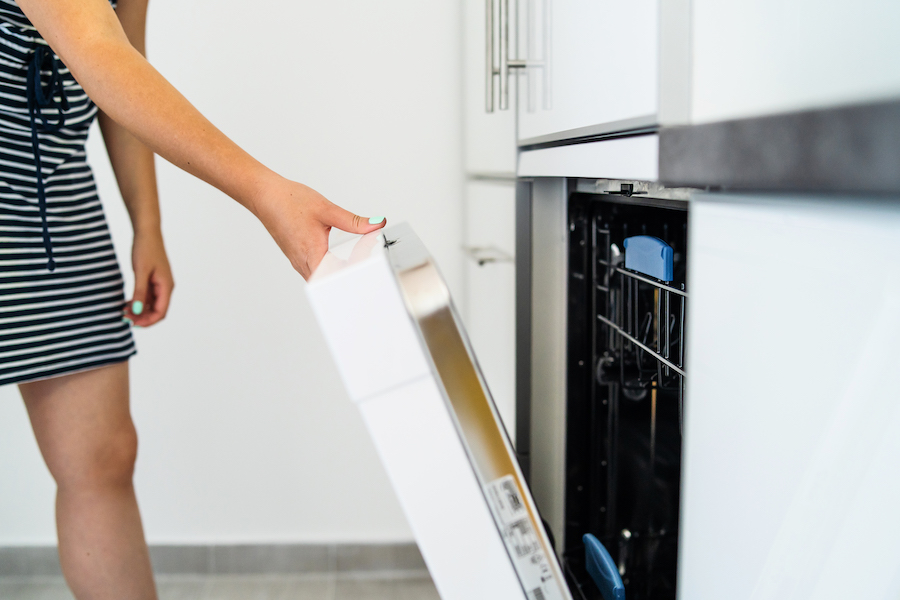Knowing Where to Look for Common Dishwasher Clogs
There are many appliances in today's technologically advanced world, especially when it comes to the plumbing system. One appliance that has been around for quite a while but once upon a time helped lessen our cleaning load in the kitchen drastically is the dishwasher. It continues to make our everyday life a bit easier, but, getting used to its convenience, we sometimes panic if the machine has some type of issue. Normally, this is not something that we can't identify, so no need to worry. Below, we will discuss the three more than likely spots to check for Common Dishwasher Clogs.
There are many ways that you can run into Common Dishwasher Clogs, actually. Sometimes this can be as simple as a label from some container coming loose and clogging the machine. Regardless of what or how you experience these Common Dishwasher Clogs, they usually can be rectified fairly easily and with some basic tools. Thus, when you notice a dishwasher problem, below are the three common areas it most likely will be found.
Where are the Three Most Common Dishwasher Clogs Located?
The three main areas in which you will find Common Dishwasher Clogs are the air gap, the drain hose, and the filtration system. Below, we will detail each of these areas as well as how and where to look for each. Likewise, we will explain how to fix the problem in each area.
1- Air Gap
If your dishwasher uses an air gap, it could be the location of your Common Dishwasher Clogs. It is located on top of your sink near the faucet. The purpose of an air gap is to allow the dishwasher to drain without waste or dirty water from the sink backing up into the machine. Obviously, from that description, you can tell that a clogged air gap could lead to problems.
To clean out Common Dishwasher Clogs in the air gap:
- Take off the cover and plastic cap on the sink to access the drain hose from the dishwasher
- Use either an air gap brush or bottle brush to clean around your drain hose
- Push the brush through the line that runs to the sink until you can see it when looking into the drain.
2- Dishwasher Drain Hose
The drain hose attaches either to the air gap or directly to your sink and garbage disposal. If the Common Dishwasher Clogs are through the drain hose, below are steps to take to stop the problem.
- First, go to your breaker box and make sure the power to the dishwasher is shut off. If you have a garbage disposal, be sure that it too is off
- Shut off the water supply that runs to the dishwasher
- Place a towel with a shallow pan on top of it under your sink to catch and spilling or splashing water
- Using the owner's manual for your dishwasher, locate and then detach both ends of the drain hose
- Use a flexible brush to clean out any debris in the hose and all hose fittings, too
- Flush the drain hose with water using either a garden hose or the bathroom sink
- Reattach both ends of your drain hose
- Turn your power to these plumbing appliances back on and turn water back on. Finally, run the dishwasher through its drain cycle
3- Filtration System
Our third and final location to look for Common Dishwasher Clogs is the filtration system. If you are not familiar with the filtration system, it is located under the spray arm on the bottom part of your dishwasher. With a filtration system, they can be slightly different depending on the brand or model of your dishwasher. So be sure to consult that owner's manual (or look it up online) before cleaning it out.
If your filtration system is the issue, there is a more than likely chance that the problem was the cause of a "non-food" item. The reasoning behind assuming this is because the filtration system is good at taking care of chunks of food and the like. Regardless of what is causing the clog, you'll be happy to know the most advanced piece of equipment you'll need to get rid of this clog is a screwdriver.
If These Common Dishwasher Clogs Aren't the Problem
In the case that you walked through all f these areas and still have Common Dishwasher Clogs, they may not be quite so common as initially thought. The problem could be one with your garbage disposal or even the sewer line. If this turns out to be, no need to worry. Just give us a call here at Poole's Plumbing and we are happy to assist with all your plumbing needs.
To contact the most trusted name in Raleigh plumbers, visit poolesplumbing.com.






